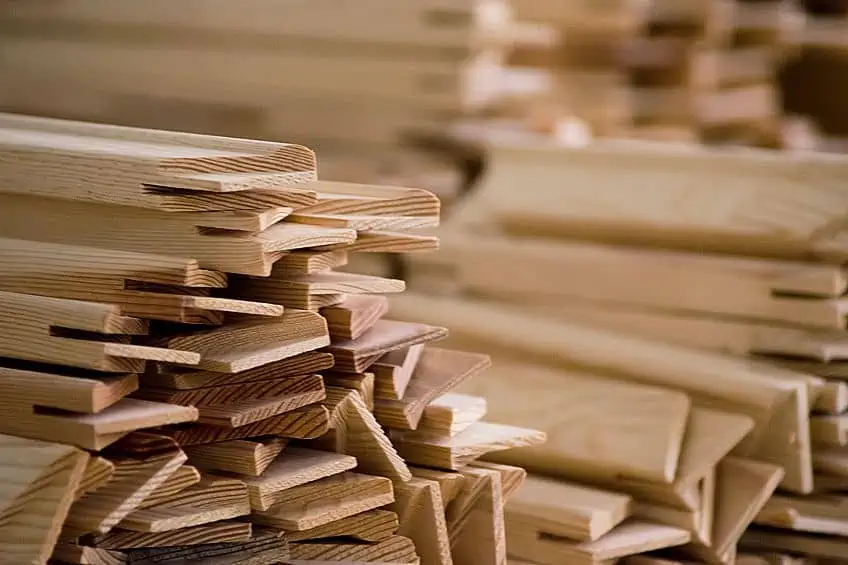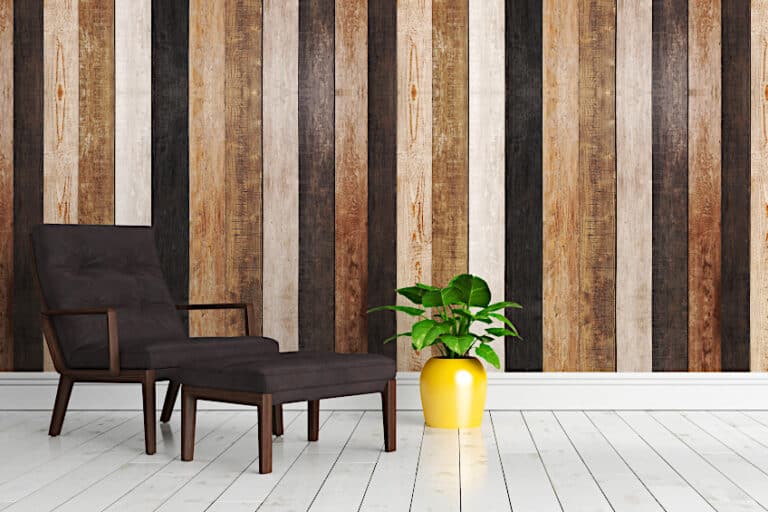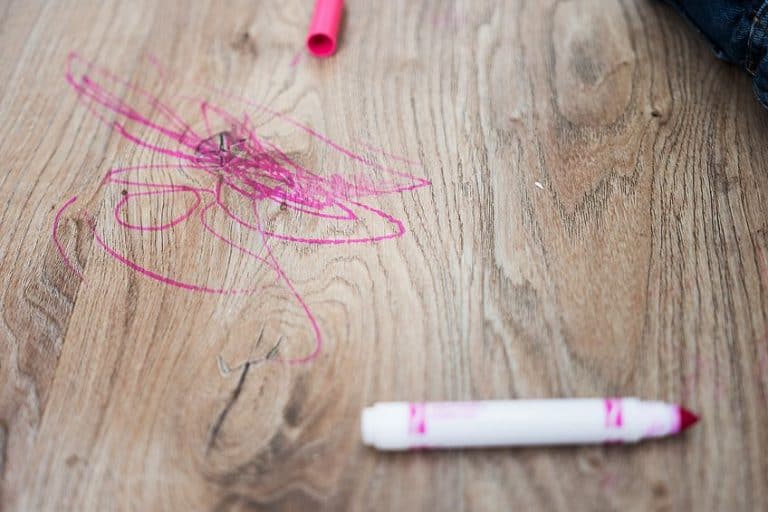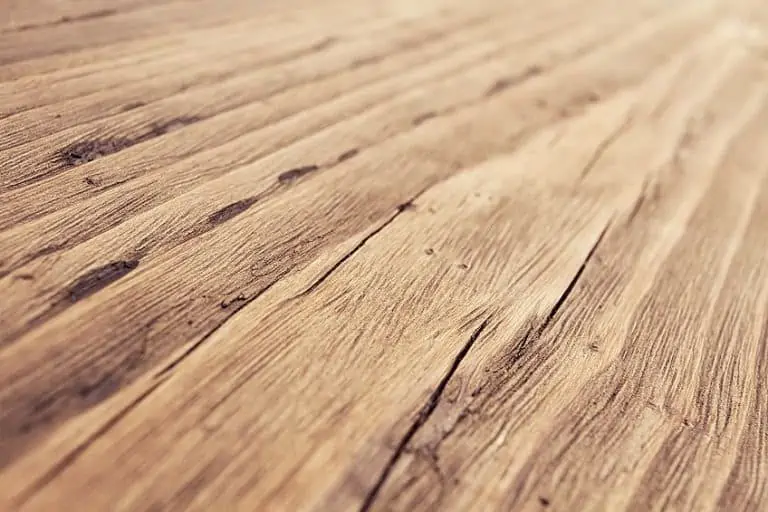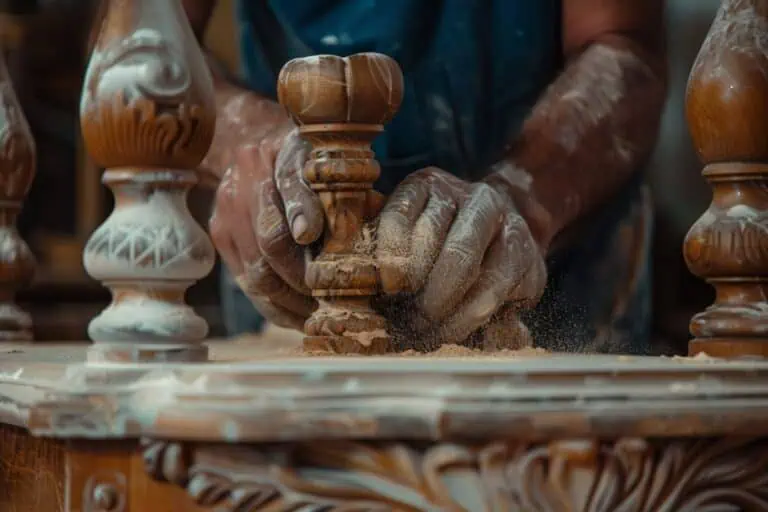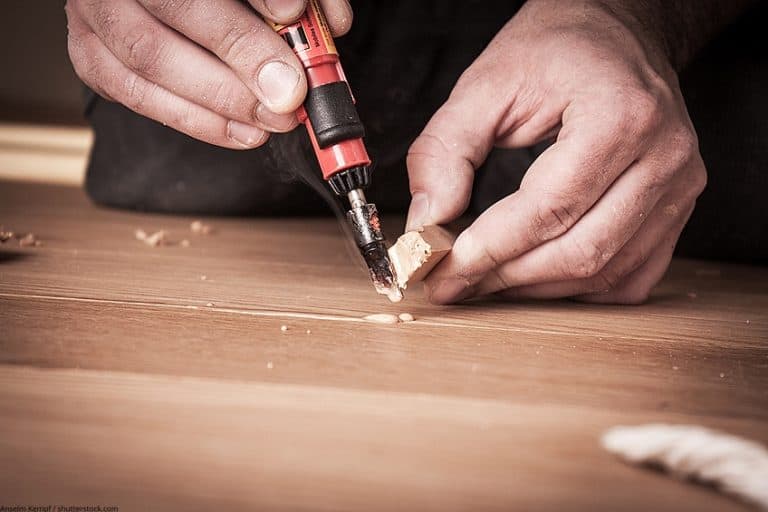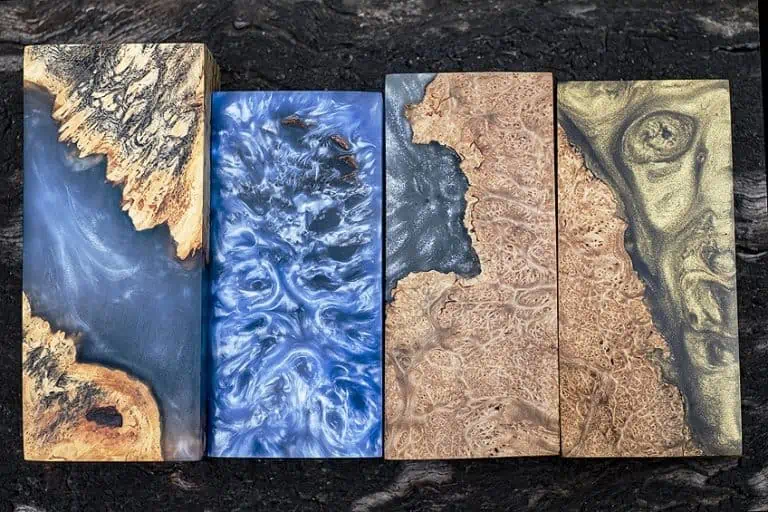How to Waterproof Plywood – How to Seal it for Outdoor Use
If you think interior decorating can be a headache, reinforcing the exterior of your home can be downright brutal. Where usually you would choose where to place your furniture, or which color you’d like to paint your bedroom, your enemies when doing exterior renovations are wildlife, the elements, and adverse weather conditions. Houses are not natural structures, and therefore they require maintenance, repair, fortification, and weatherproofing. One of the cheapest and easiest resources to use when weatherproofing your home is plywood, but does it hold up?
Is Plywood Waterproof?
Plywood is available in many variations, and one of the more commonly purchased variations of plywood is water-resistant plywood. Water-resistant plywood is made with waterproof adhesives and therefore repels water molecules with minimal effort; however, this degree of water repellent will not protect you or your home from a steady downpour of rain.
This being said, plywood (whether water-resistant or not) is not waterproof in its natural state, and you will have to apply either a waterproof coating or deep-penetration waterproof treatment to your plywood to make the material completely watertight and moisture-resistant indefinitely.
You might find yourself asking why so many people choose plywood to waterproof their homes and workpieces instead of other materials. Well, this is because plywood is what is known as an engineered wood, which simply means that it is not wood that is taken directly from trees, cut up, and then sold to you at your local hardware or wood supplier.
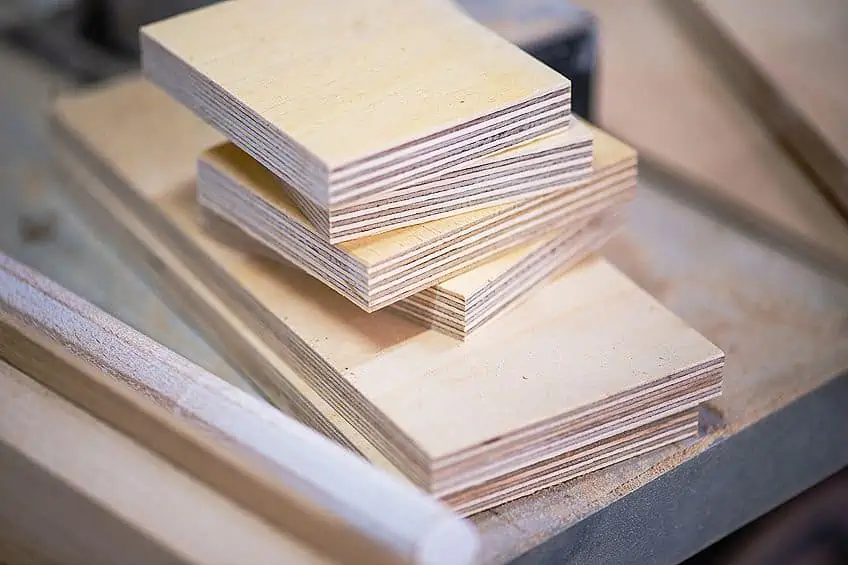
Instead, Plywood (like other engineered woods) is formed by combining layers of wood and other materials and compressing them to such a degree that they form a solid. Plywood in particular is made by taking many layers of a paper-thin material called veneer and binding them to one another with adhesives.
These adhesives are often water-resistant, so when enough of them are stuck together they create a water-resistant engineered wood. Engineered wood is often cheaper than conventional hardwoods and can be designed for very specific purposes. This is because manufacturers are able to choose which properties they would like these woods to have.
Plywood is often referred to as the original engineered wood as it has been around since the late 1980s, and its properties can be manipulated to suit virtually any application. Plywood also bonds well with additives, coatings, fillers, and paints, which places it in high demand within industries like home renovation, upholstery, and construction.
Therefore, although plywood is not waterproof in its base form, it is very versatile and can be made waterproof very easily.
What Are the Advantages of Waterproofing Plywood?
There are a few advantages to waterproofing your plywood. You do have the option of purchasing marine plywood and of course, choosing other waterproof materials, but for most people, the aesthetic of a wood finish simply can’t be beaten. If you are considering waterproofing plywood in the near future, here are some advantages you can look forward to.
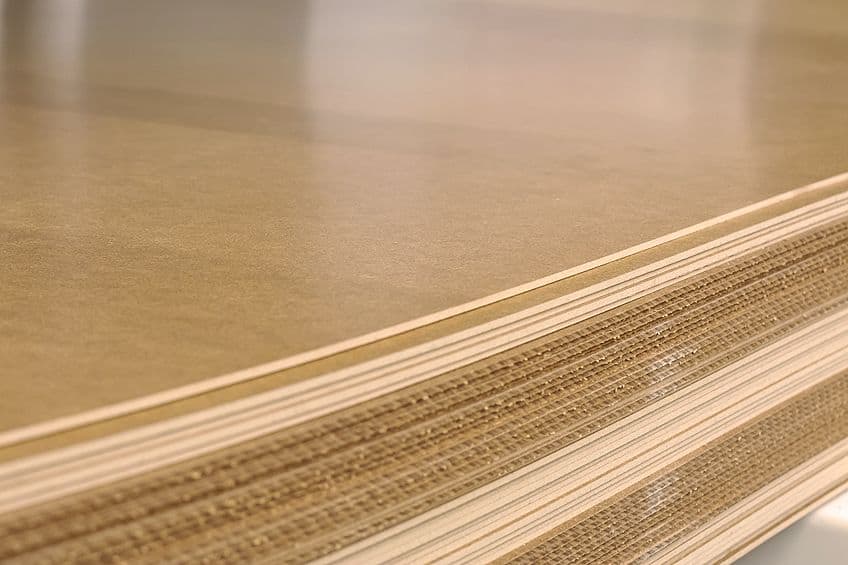
It Lasts Longer
Just like water-resistant and marine-grade plywood, waterproofing your plywood will essentially make it last longer. Like placing a comic book in an airtight bag so it stays mint, treating your plywood with a waterproof coating will not only preserve the wood’s integrity but can also preserve the finish of the wood’s outward appearance. Replacing any flooring, countertops, and even ceiling rafters can be a Herculean task. Thus, choosing to waterproof these surfaces if they are made of plywood can save you from not only an eyesore but also from having to fork out even more money on something that should be a once-off purchase.
It Protects Against Heat
If you live in a relatively warm state, you are probably thinking that this doesn’t really apply to you, but once again you would be only half right. If you think that water damage to plywood looks bad, you don’t want to find out what overexposure to heat does to the stuff. Since plywood is made up of layers of veneer held together by high-strength, water-resistant adhesives, it does not do too well in the heat if it is not treated. Essentially, the heat will slowly begin to melt the adhesive bonding the sheets together, turning it into something that resembles really wide pieces of flat pasta stacked on top of one another.
Waterproofing and varnishing your plywood will eliminate the possibility of this happening entirely, and ensure that you never have to worry about your home’s exterior falling apart.
It Protects Against Rot
You might think that because plywood is an engineered wood and is not what you would typically consider being solid wood, that it is not susceptible to rot. If you thought this, you are half right, and although plywood will not rot away in the conventional sense, prolonged exposure to consistent downpour or excessive humidity can cause water molecules to build up between the layers of veneer. This moisture can cause the sheets of veneer to separate from one another and eventually fall apart or disintegrate completely.
It Protects Against Fungi
If you have ever had to scrape the mold off your ceiling, you know that it is not a pleasant experience. This being said, just like the moisture from your shower can turn your tiles and sealings into brand new ecosystems if they aren’t coated correctly, it can turn your plywood slats into a breeding ground pretty quickly too. Rest assured, if fungi appear inside your plywood boards you can simply throw the entire panel away, and we say this with absolutely no exaggeration. Plywood with a fungi infection can not only cause your entire home to smell like mildew, but certain types of fungi spores can be toxic when inhaled.
Waterproofing your plywood can save you from all these troubles, and once again save you from having to resurface your home exterior.
How to Waterproof Plywood
Previously, we covered that there are several ways to waterproof your plywood, and depending on your needs, how deep your pockets are, and how much time you would like to spend, there are more than a few ways to go about this. Let’s have a look at some of the more common methods used to waterproof your plywood.
Remember that when you are waterproofing plywood you will be working with some pretty toxic substances, so you should always ensure that your eyes, hands, mouth, and nose are covered. Besides your personal health, you should consider laying down a tarp and sealing off anything you don’t want the sealing solutions to get into or onto.
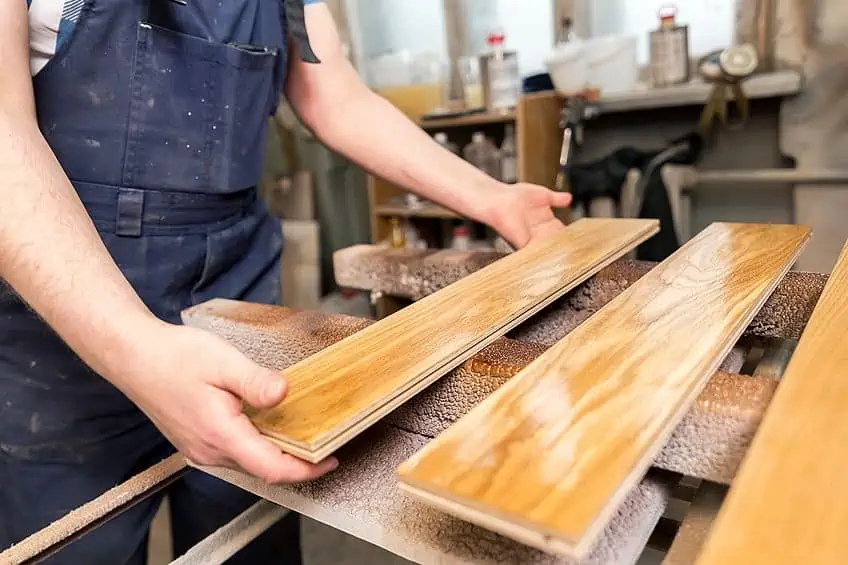
Liquid Latex
Arguably the easiest way to seal your plywood from water is liquid latex. Liquid latex can either be purchased in an easy-to-use spray can or you can order the substance in larger volume and use a paint sprayer for application. In this case, the spray can would be conducive for smaller projects but for larger jobs, the paint sprayer would be best, considering that spraying an entire wall’s worth of plywood would require you to empty your hardware store of liquid latex.
Remember that when you are waterproofing plywood, you should always focus on the edges where the epoxy and veneer are exposed, as this is where water will seep in and ruin your plywood. We recommend using Krylon’s liquid latex spray.
The only drawback of liquid latex is that you will need many layers to ensure good coverage, and if you miss a spot you will have dedicated a lot of your time and effort only for your plywood to end up absorbing water and splitting anyway. Therefore, you should be a thorough as possible when using liquid latex and apply multiple coats if possible (or as advised by the manufacturer).
Penetrating Epoxy Sealant
Maybe you are the kind of person that likes that unpainted rustic feel that wooden finishes give the surface wood. If you are, you will find that a penetrating epoxy sealant is a great way to maintain the aesthetic of your space while still providing you with a waterproof coating that will last the lifetime of the wood itself.
Being a clear coat isn’t the only advantage of using epoxy to seal your plywood, as epoxy actually increases the tensile strength of the surfaces you apply it to, meaning that it will protect your plywood from accidental dings and scratches too ! We suggest using ProMarine Supplies’ crystal-clear epoxy.
Even if you have already purchased water-resistant plywood, epoxy is a good way to preserve the finishing or surface layer of veneer. So, how do you go about using it? Well, Epoxy typically comes in two parts, namely the epoxy and the hardener, which you will mix to form the final solution.
Using a brush, you then simply apply the solution to the surface and edges of the wood, but you should work quickly as these solutions dry quite quickly. You can apply multiple coats, but it is best to check the manufacturer’s instructions. Always ensure that you sand and clean your wood surfaces before applying epoxy to avoid chips and bubbles in your soon-to-be glossy wooden exterior.
Polyurethane Varnish
Polyurethane is a bit like the plywood of plastic adhesives. It is extremely versatile, and depending on what state you buy it in, polyurethane can be used to create solids like skateboards wheels or semi-liquids like furniture surfaces. In this instance, you can use polyurethane to waterproof your plywood by simply getting some onto a brush and covering all four edges of your board. You can also use a suitable paint sprayer to apply the polyurethane varnish.
It is important to note that once your plywood surface has been covered in polyurethane, it will be extremely difficult to apply any other future wood finishes, so ensure that you are happy with the appearance of the wood before varnishing. We recommend using Varathane’s polyurethane finish.
It is extremely important to wear a face mask and to work in a well-ventilated area when working with this substance, as it can leave you feeling short of breath and disorientated if used in enclosed spaces. As per ordinary varnish, apply coats as directed by the manufacturer and allow for enough drying time in-between applying said coats.
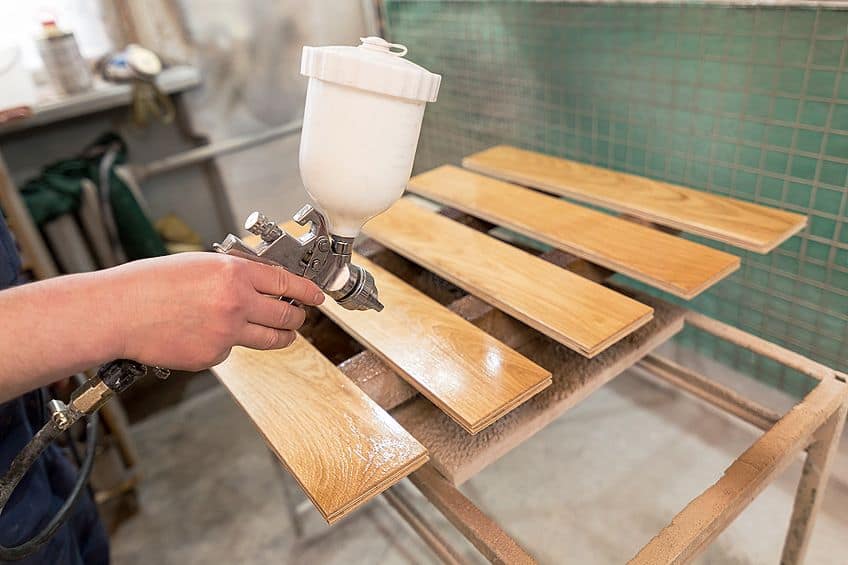
Spray Painting
This is arguably the least boring choice you could make when choosing how to weatherproof plywood. Nothing beats going to pick out which color you are going to use, but before you get too trigger happy, there are some things you should do before you spray paint your plywood. First off, always check that you have the right type of paint for the job, specifically, you will need to use oil-based paint in order for it to bond with the plywood.
Oil-based paint seeps into the pores and grain of the wood, forming a surface that protects it from things like harsh sunlight and torrential downpour. We recommend using Rust-Oleum’s Professional enamel spray paint.
In the same way that you would sand down your surface when using epoxy, you will need to sand down the surface of your plywood to expose the “raw” wood for the paint to bond to. This process also ensures that you get rid of any sand or dust present on your surface before spraying, and once you have sanded your wood’s surface smooth you can apply your primer and oil-based paint in smooth, even layers. Remember to be patient, as consistency is what ultimately gives you a good finish when spraying paint, and as always, ensure that you are working in a well-ventilated area.
Wood Staining
Perhaps not the first thing you would think of when choosing how to weatherproof plywood, wood staining is one of the best ways to ensure that water doesn’t ruin your plywood, and just like an epoxy sealant, it will not cover up the natural finish of the wood. Wood staining has two distinct features: It not only provides a penetrating layer of water protection for wooden surfaces, but it ever so slightly brightens the surfaces it is applied to.
This makes wood staining quite a popular method of wood protection and aesthetic enhancement in the crafting industry. We suggest Defy’s exterior wood stain.
How would you go about using a wood stainer though? Well, it’s pretty simple compared to any other plywood sealer we have looked at thus far. This type of plywood sealer is purchased in a container, so you can remove the liquid contents and either pop it into a spray bottle or a powered paint sprayer, depending on the size of plywood you are working with. Once you have covered the surface and floor your plywood is situated on, simply apply the wood stain to the surface and edges of the plywood and wipe off any excess. Allow ample time for the stain to dry, and as always work in a well-ventilated area.
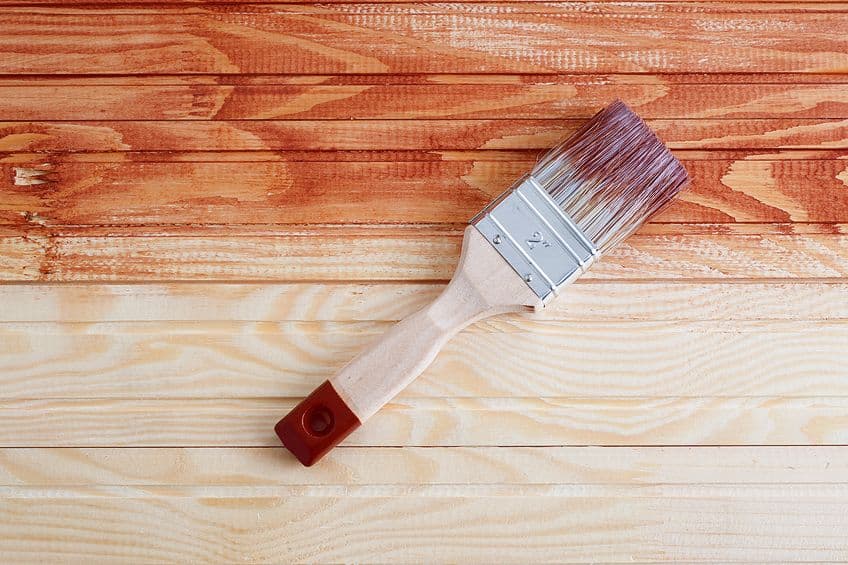
How Long Does Untreated Plywood Last?
Answering this question can be tricky. Considering that virtually all plywood in existence is “treated” in some way or another, the term “untreated” is used pretty lightly in this discourse. Most types of plywood can also be described as water-resistant plywood due to the common use of finishes applied to the veneer and the use of epoxies applied in-between these layers.
This being said, if you refer to untreated plywood, most people will assume you are talking about plywood that has not been treated with some water-resistant coatings outside of the production process or any other plywood besides marine plywood.
“Normal” plywood, and even marine plywood, that is exposed to the elements can still last for quite a long time.
The average lifespan of these types of plywood in foul weather environments is around 15 to 25 years, depending on the location and weather patterns in the area in question. However, exposure to moisture of any kind can drastically decrease the lifespan of any structure or object made of plywood that has not been treated with varnish, epoxy, wood stain, and so forth.
As we mentioned previously, moisture, fungi, and splitting occur when water sits between the layers of veneer plywood is made from, and therefore when these exposed edges are not treated (or treated incorrectly), this is where deterioration starts.
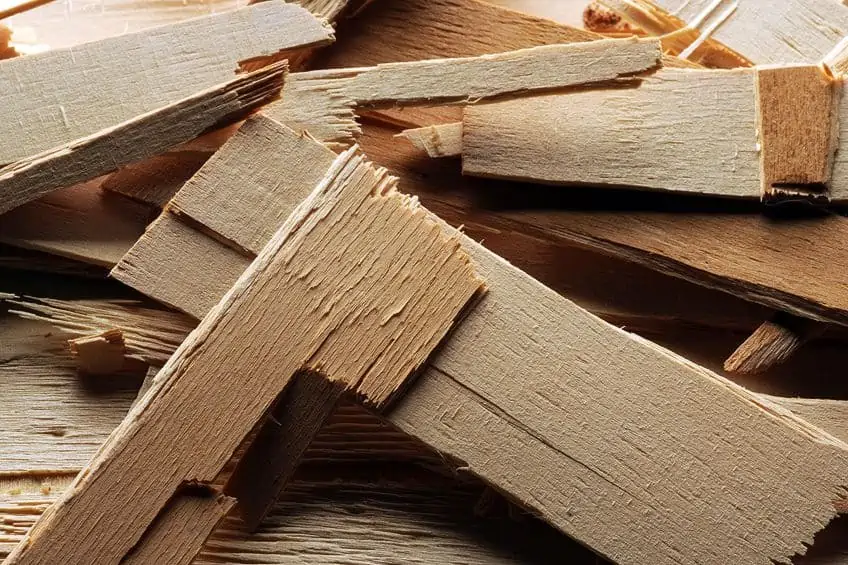
You should remember that even water-resistant plywood and marine plywood only come with a certain degree of tolerance from the factory and that, eventually, you will either have to treat or replace these panels. If you enjoy free time and not having to tear your home apart, treating your pre-treated plywood from a supplier is highly recommended, but you need to ensure that the plywood you purchase is of good quality. Treated plywood is 100% waterproof, resistant to heat warping, and will last in virtually any environment anywhere between 35 to 50 years if it is not abused.
Remember that even though plywood is extremely durable, it is not impervious to blunt force trauma, live fire, open flames, and other concentrated forces, even though it can take quite a beating from hail and dust storms if you need it to. Ultimately, it does boil down to what type of plywood sealer you use, the quality of plywood you purchase (if there are gaps in the veneer at the edge of the slat, maybe look for a better supplier), and how well you apply your plywood sealer.
Now that you know how to seal plywood for outdoor use, the different techniques you can use to waterproof your plywood, how to choose a good quality of plywood, and its various applications, the possibilities are limitless! Remember that no matter what the project is, always ensure that you know what you are buying, work in a well-ventilated area, and always wear personal protective equipment.
Frequently Asked Questions
Is Waterproof Plywood Really Waterproof?
Although difficult to come by through consumer suppliers, industrial-grade plywood is not only 100% waterproof, but it is also more durable and can be produced in higher volumes. This is not the only way to ensure your plywood stays dry though, as there are many sources that can show you how to seal plywood for outdoor use if you don’t mind putting in some elbow grease and saving some money.
What Is the Highest-Quality Plywood?
Like most things in life, you typically get what you pay for. Much like the way we grade meat, the quality of plywood is distinguished by its letter grade. The best quality plywood that money can buy is Grade A Plywood, but as we alluded to earlier, this will cost you much more than the plywood you could typically get from your local hardware. To check the quality of plywood, simply check for gaps and/or inconsistencies in the layers of veneer on the edge of the piece.
How Is Plywood Made?
Plywood is made of thin sheets of wood known as veneers. The name plywood comes from these thin sheets, which are known as “ply’s”. These pieces of wood are glued to one another using extremely strong epoxies that literally bond these layers together. These now-solid pieces of wood are then heat-treated, pressed, cut, finished, and sold to you. Plywood wood is typically seen as environmentally friendly as it is reusable and does not have a great impact on the environment.

I have been into woodworking since 2005 and woodturning since 2011. Because of my love for wood and woodworking, I started woodhappen.com to teach other enthusiasts about how to finish and seal wood, the best woodworking tools, the different types of wood, and everything else related to woodworking! Read more about me here.

